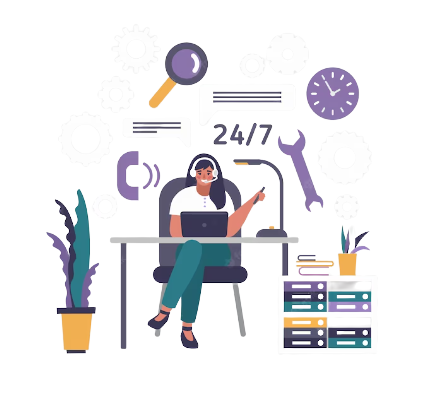Technical support response time is the amount of time it takes for a support team to respond to a customer’s inquiry. It includes the time taken to acknowledge the request, identify the problem, and provide a solution. Quick response time is critical to customer satisfaction and retention.
In today’s fast-paced world, customers expect quick and efficient technical support. Long wait times and delayed responses can lead to frustration and dissatisfaction, which can harm a business’s reputation. Therefore, it’s crucial to prioritize and improve technical support response time. This blog post will explore the best practices and challenges of improving technical support response time.
Understanding Technical Support Response Time
Technical support response time is the amount of time it takes for a support team to respond to a customer’s inquiry. It includes the time taken to acknowledge the request, identify the problem, and provide a solution. Quick response time is critical to customer satisfaction and retention.

Best Practices for Improving Technical Support Response Time
-
Implement Automated Tools
Automated tools such as chatbots, ticket routing, and self-service portals can help reduce response times. Chatbots can handle simple queries and provide immediate solutions, while ticket routing ensures that the tickets are sent to the right team members for resolution. Self-service portals allow customers to troubleshoot their issues and find solutions without having to contact support.
-
Establish Clear and Defined SLAs
Service Level Agreements (SLAs) outline the expectations and obligations of both the customer and the support team. It’s essential to establish clear and defined SLAs that specify response and resolution times. This ensures that customers know what to expect and that the support team has clear guidelines to follow.
-
Provide Multi-Channel Support
Offering multiple support channels such as phone, email, chat, and social media can help reduce response times. Customers can choose the channel that suits them best and receive a prompt response. It’s important to ensure that all channels are well-monitored and that customers receive the same level of support regardless of the channel they choose.
-
Focus on First Contact Resolution (FCR)
FCR is the ability to resolve a customer’s issue during their first interaction with the support team. FCR reduces the need for follow-up calls or emails, thus reducing response times. It’s essential to provide support staff with the necessary training, resources, and tools to resolve issues promptly.
Challenges of Improving Technical Support Response Time
-
Lack of Resources and Staffing
One of the biggest challenges is the lack of resources and staffing. A shortage of qualified support staff or inadequate training can lead to longer response times and dissatisfied customers. Hiring and training new staff can be time-consuming and expensive.
-
The Complexity of Technical Issues
Technical issues can be complex and require time and expertise to resolve. This can lead to longer response times and increased frustration for customers. Support staff needs to have the necessary technical knowledge and skills to handle complex issues promptly.
-
High Ticket Volume and Prioritization
High ticket volume can lead to longer response times, especially during peak periods. Prioritizing tickets based on urgency and customer impact can help reduce response times. However, it can be challenging to prioritize tickets effectively without a clear understanding of customer needs.
Overcoming Technical Support Response Time Challenges
-
Outsource Technical Support
Outsourcing technical support to a third-party provider can help overcome the challenges of staffing and training. A third-party provider can provide experienced support staff and handle high ticket volumes, reducing response times and improving customer satisfaction.
-
Automate Repetitive Tasks
Automating repetitive tasks such as ticket routing, chatbots, and self-service portals can help reduce response times and free up support staff to handle more complex issues.
-
Implement a Knowledge Management System
A knowledge management system can help support staff to access relevant information quickly and provide timely solutions to customers. This can help reduce response times and improve the quality of support provided.
Conclusion
Improving technical support response time is critical to customer satisfaction and retention. By implementing best practices such as automated tools, clear SLAs, multi-channel support, and FCR, businesses can reduce response times and improve the quality of support provided. However, challenges such as staffing, the complexity of technical issues, and high ticket volume can make it difficult to improve response times.
Outsourcing technical support, automating repetitive tasks, and implementing a knowledge management system can help overcome these challenges and improve technical support response time. Tanbits provides Technical support services that leverage these strategies, enabling businesses to enhance their customer support efficiency and provide timely solutions to their customers.
BACK










